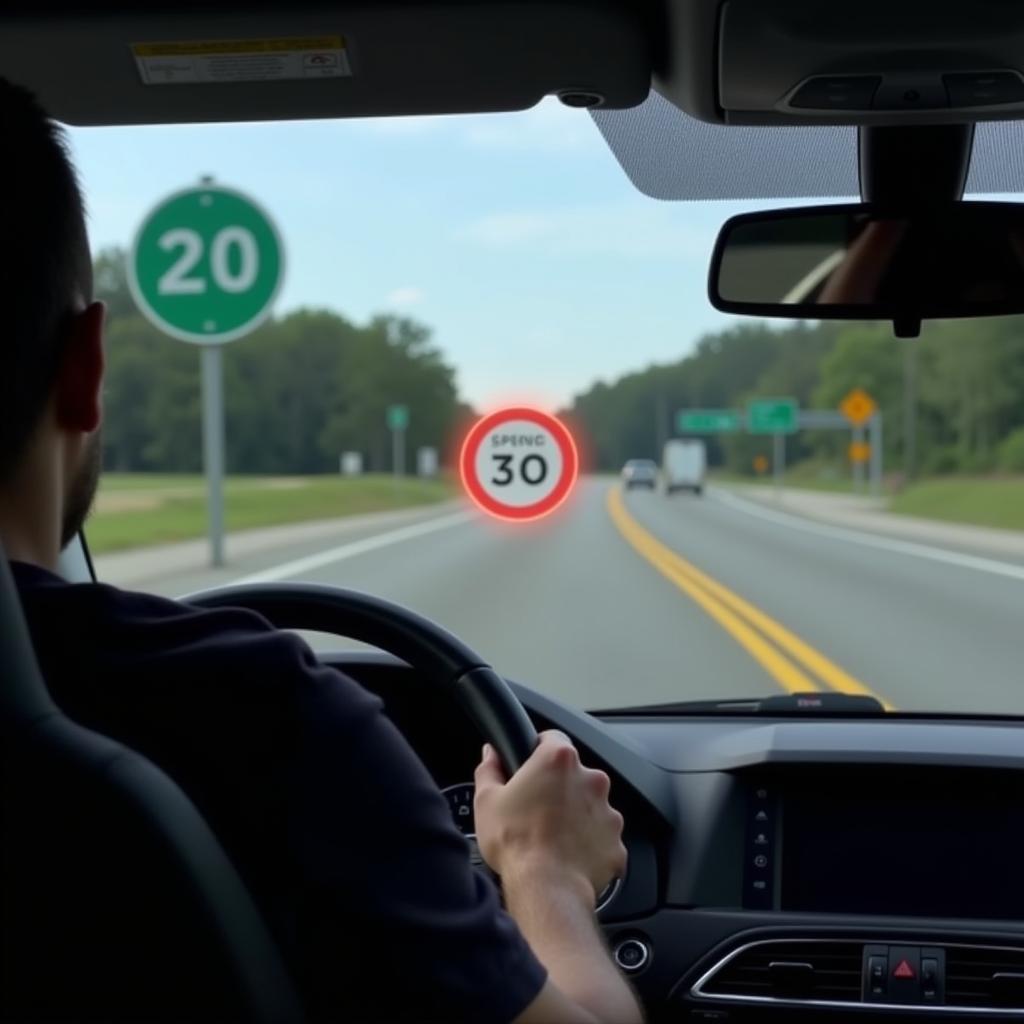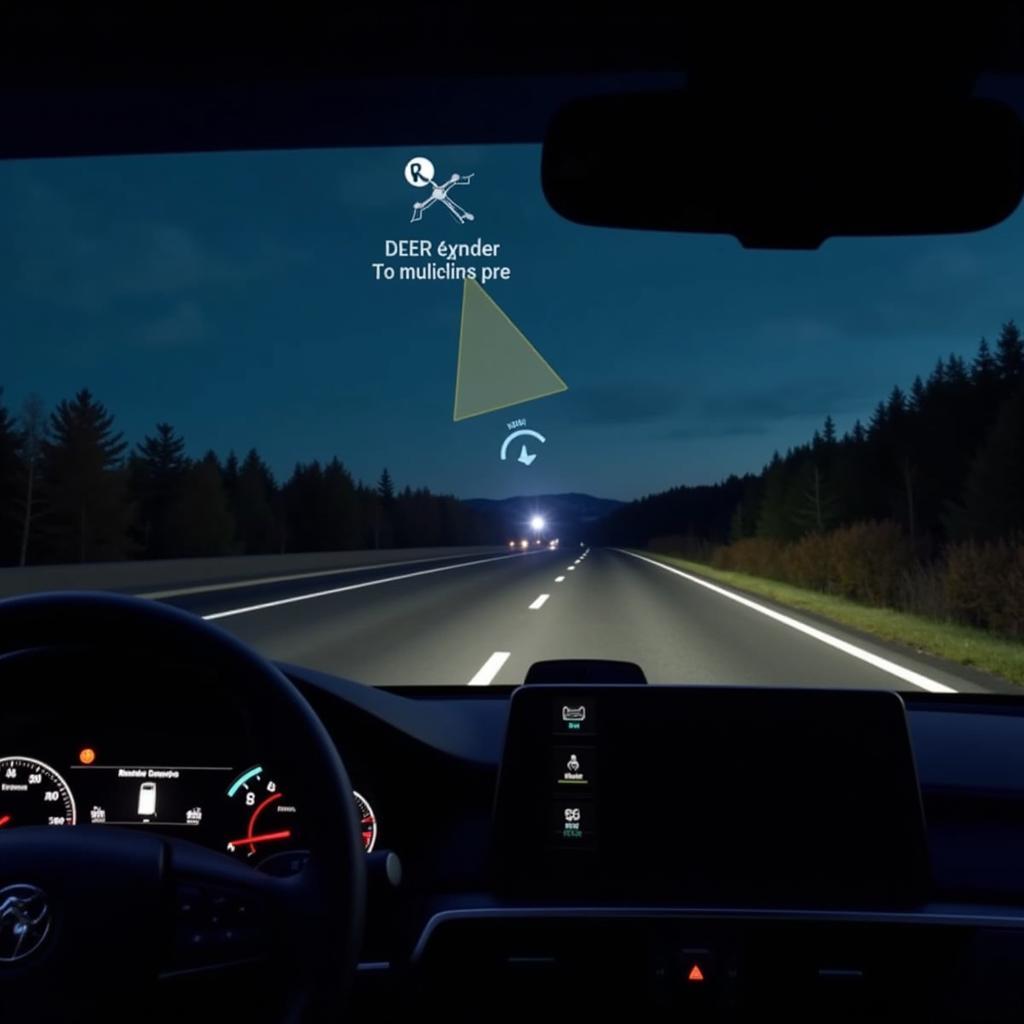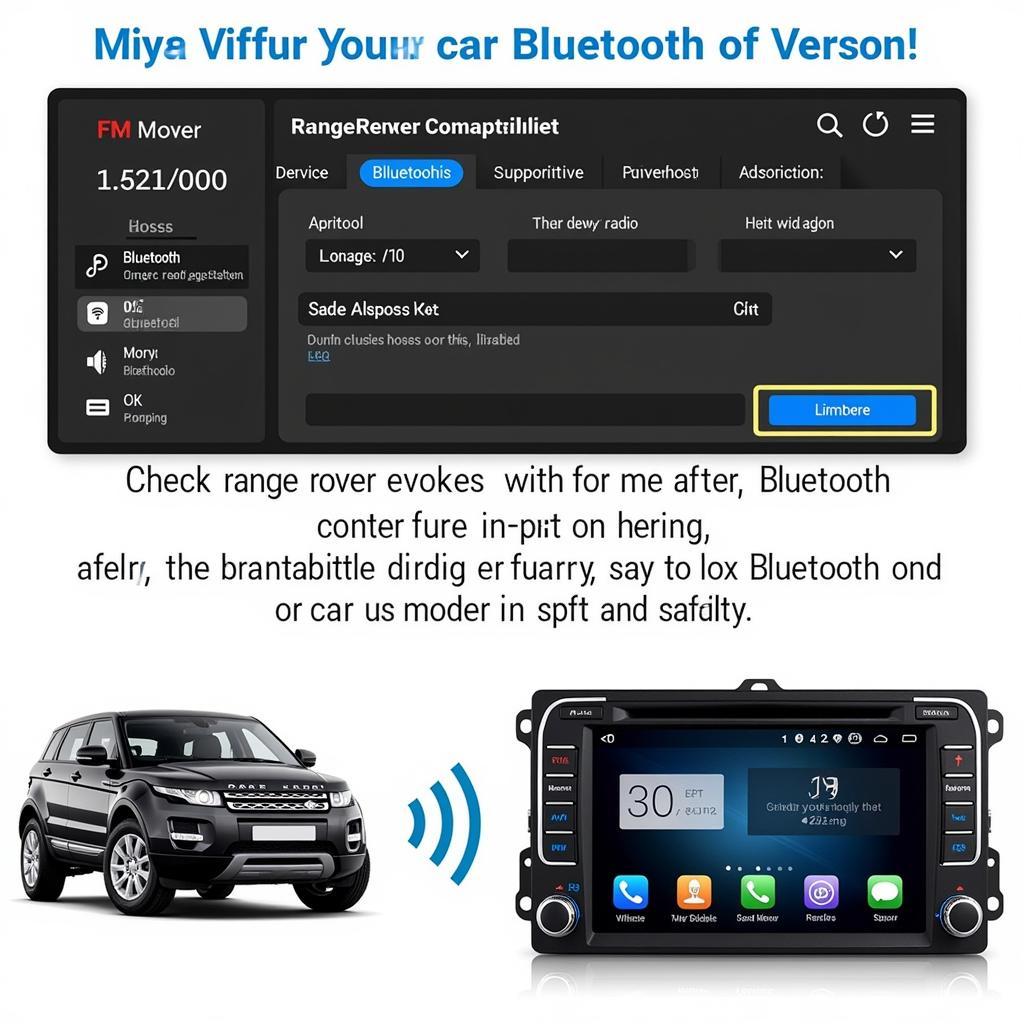Windshield-projected active driving displays with traffic sign recognition are revolutionizing the driving experience. These advanced systems project crucial information directly onto the windshield, keeping drivers focused on the road while providing real-time updates on speed, navigation, and importantly, detected traffic signs. This allows for a safer and more informed driving experience.
Understanding Windshield-Projected Active Driving Displays
These displays, often called HUDs (Heads-Up Displays), offer a seamless way to access critical driving information without diverting your gaze. Information such as speed, navigation directions, and warnings appear as though they are floating a few meters ahead, allowing drivers to process information quickly and efficiently. This technology minimizes distractions and significantly improves reaction time, contributing to a safer driving environment.
How Traffic Sign Recognition Enhances the Driving Experience
Integrated traffic sign recognition takes the HUD a step further. By utilizing cameras and sophisticated image processing algorithms, the system identifies and displays relevant traffic signs, such as speed limits, no passing zones, and stop signs, directly on the windshield. This feature is especially helpful in unfamiliar areas or during challenging driving conditions.
 Traffic Sign Recognition on a HUD Display
Traffic Sign Recognition on a HUD Display
Benefits of Using a Windshield-Projected Active Driving Display with Traffic Sign Recognition
The advantages of this technology are numerous, impacting both safety and convenience. Enhanced safety comes from reduced driver distraction and improved situational awareness. Convenience is improved through features like clear navigation prompts and real-time traffic sign updates. This combination makes driving less stressful and more enjoyable.
Improved Safety through Reduced Distraction
By projecting information directly onto the windshield, drivers don’t need to look down at the dashboard or their navigation system. This minimizes the time spent with eyes off the road, significantly reducing the risk of accidents. The constant awareness of speed limits, facilitated by traffic sign recognition, further encourages adherence to traffic regulations.
Enhanced Situational Awareness
Being constantly aware of speed limits and other crucial traffic signs helps drivers anticipate potential hazards and adjust their driving accordingly. This proactive approach to driving can significantly improve safety, especially in complex traffic situations.
 Enhanced Situational Awareness with HUD
Enhanced Situational Awareness with HUD
Troubleshooting Common Issues
Like any technology, windshield-projected displays can sometimes encounter problems. Common issues include misaligned projections, software glitches, and hardware malfunctions.
Troubleshooting Misaligned Projections
A misaligned projection can be distracting. Check your vehicle’s settings to calibrate the display. Consult your owner’s manual for specific instructions on how to adjust the projection to your preferred position.
Addressing Software Glitches
Software glitches can cause the display to malfunction. Often, a simple system restart can resolve the issue. If the problem persists, consult a qualified technician or contact the manufacturer for software updates.
Dealing with Hardware Malfunctions
Hardware malfunctions require professional attention. If your display isn’t working correctly, contact a certified repair center for diagnosis and repair.
“A properly functioning HUD significantly improves driver reaction time, which is crucial in avoiding accidents,” says John Smith, Senior Automotive Electrical Engineer at Advanced Auto Solutions.
How Does Traffic Sign Recognition Work?
The system uses a forward-facing camera to capture images of traffic signs. These images are then processed by sophisticated algorithms that identify and interpret the sign’s meaning. This information is then displayed on the HUD in real-time.
What are the limitations of Traffic Sign Recognition?
While highly advanced, traffic sign recognition systems have limitations. Adverse weather conditions like heavy rain or snow can obscure signs, hindering the system’s ability to detect them. “Remember, traffic sign recognition is a driver-assist feature, not a replacement for attentive driving,” reminds Emily Davis, Lead Software Engineer at AutoVision Technologies.
Conclusion
The windshield-projected active driving display with traffic sign recognition is transforming the driving experience by enhancing safety and convenience. By keeping drivers informed and focused, this technology contributes to a safer and more enjoyable journey. Consider upgrading your vehicle with this innovative technology to experience the future of driving.
FAQ
-
What is a windshield-projected active driving display? It’s a system that projects important driving information onto the windshield.
-
How does traffic sign recognition work? It uses a camera and image processing to identify and display traffic signs.
-
What are the benefits of this technology? Increased safety and enhanced convenience are key benefits.
-
What are common issues with HUDs? Misaligned projections and software glitches are common issues.
-
How can I fix a misaligned HUD? Check your vehicle’s settings to calibrate the display.
-
What should I do if my HUD malfunctions? Consult a qualified technician or contact the manufacturer.
-
Is traffic sign recognition foolproof? No, adverse weather can affect its performance.


